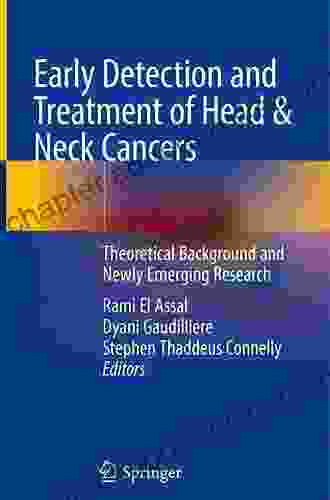Chapter 1: Detection
Early Detection: The Key to Prevention
Early detection is essential for preventing disease progression and improving patient outcomes. This chapter explores the various methods and techniques used for early detection, including:
- Physical examinations
- Laboratory tests
- Imaging studies
- Genetic testing
By understanding the strengths and limitations of each method, healthcare professionals can develop effective early detection strategies for a wide range of diseases.
Case Study: Early Detection of Cancer
This chapter presents a case study that illustrates the importance of early cancer detection. By recognizing the early warning signs and symptoms, healthcare professionals can initiate prompt treatment and improve the chances of patient survival.
Chapter 2: Diagnosis
Diagnostic Procedures and Tests
Once a disease or condition is suspected, accurate diagnosis is essential for determining the appropriate course of treatment. This chapter provides an overview of the various diagnostic procedures and tests available to healthcare professionals, including:
- Medical history
- Physical examinations
- Laboratory tests
- Imaging studies
- Biopsies
By carefully evaluating the patient's symptoms, history, and test results, healthcare professionals can reach an accurate diagnosis and develop a personalized treatment plan.
Case Study: Differential Diagnosis of Abdominal Pain
This chapter presents a case study that demonstrates the importance of differential diagnosis in identifying the underlying cause of abdominal pain. Through a systematic process of elimination, healthcare professionals can accurately diagnose the patient's condition and provide appropriate treatment.
Chapter 3: Treatment
Therapeutic Interventions
After a diagnosis has been established, the next step is to develop an effective treatment plan. This chapter explores the various therapeutic interventions available to healthcare professionals, including:
- Pharmacological therapy
- Surgical interventions
- Radiation therapy
- Rehabilitation
- Lifestyle modifications
By understanding the indications, benefits, and risks of each treatment option, healthcare professionals can tailor a treatment plan that meets the individual needs of each patient.
Case Study: Treatment of Heart Failure
This chapter presents a case study that illustrates the complexity of managing heart failure. By combining pharmacological therapy, lifestyle modifications, and patient education, healthcare professionals can improve the patient's quality of life and reduce the risk of complications.
Chapter 4:
This concluding chapter summarizes the key principles and practices covered in the book. It emphasizes the importance of evidence-based medicine, patient-centered care, and continuous learning for effective healthcare delivery.
Healthcare professionals who embrace the knowledge and techniques presented in this book will be well-equipped to meet the challenges of the ever-changing healthcare landscape and provide the highest quality of care to their patients.
Don't miss out on this essential guide for healthcare professionals. Free Download your copy of Practical Applications and Techniques for Detection, Diagnosis, and Treatment today and revolutionize your clinical practice.
Free Download Now
























































































